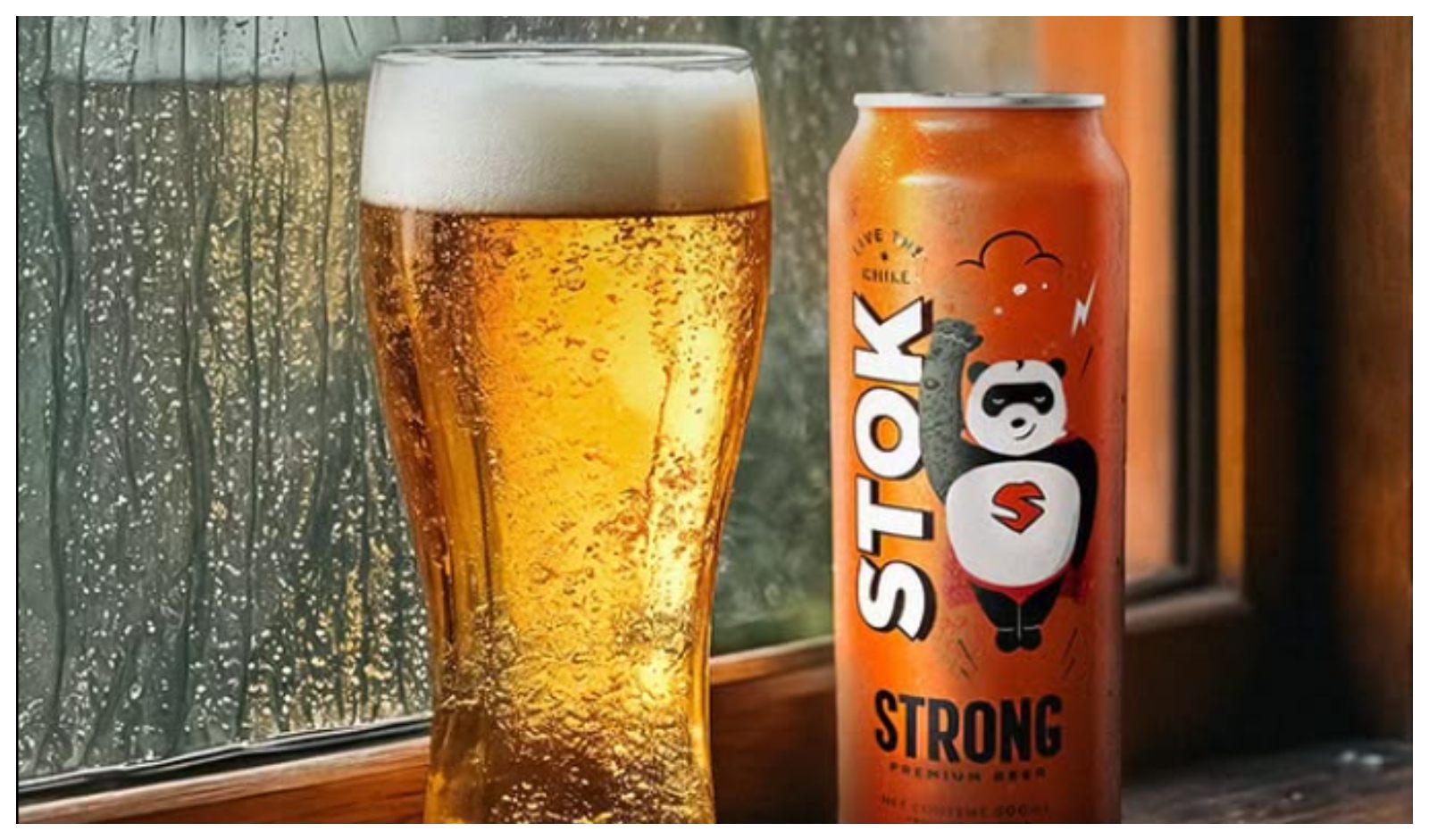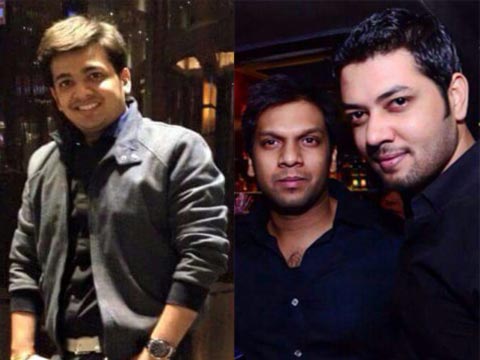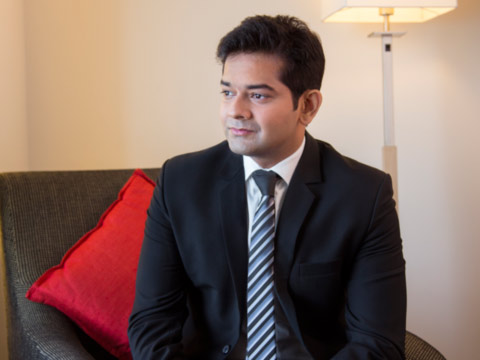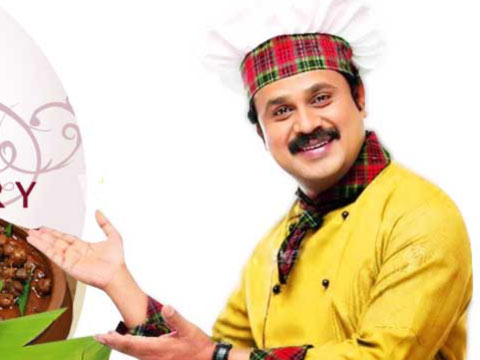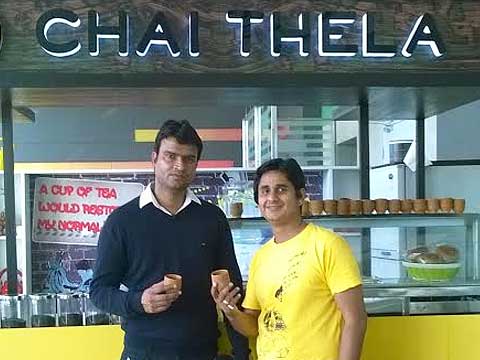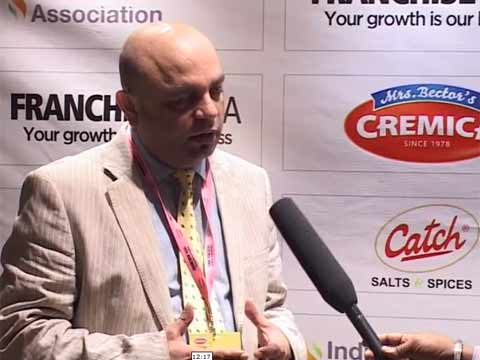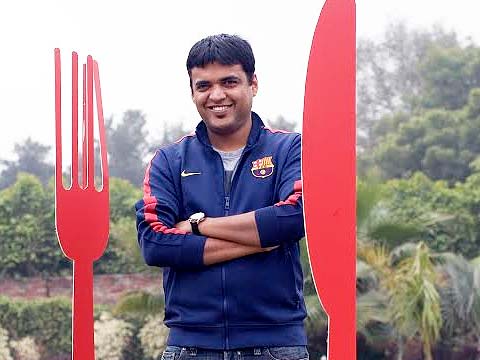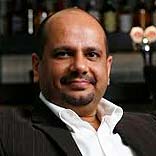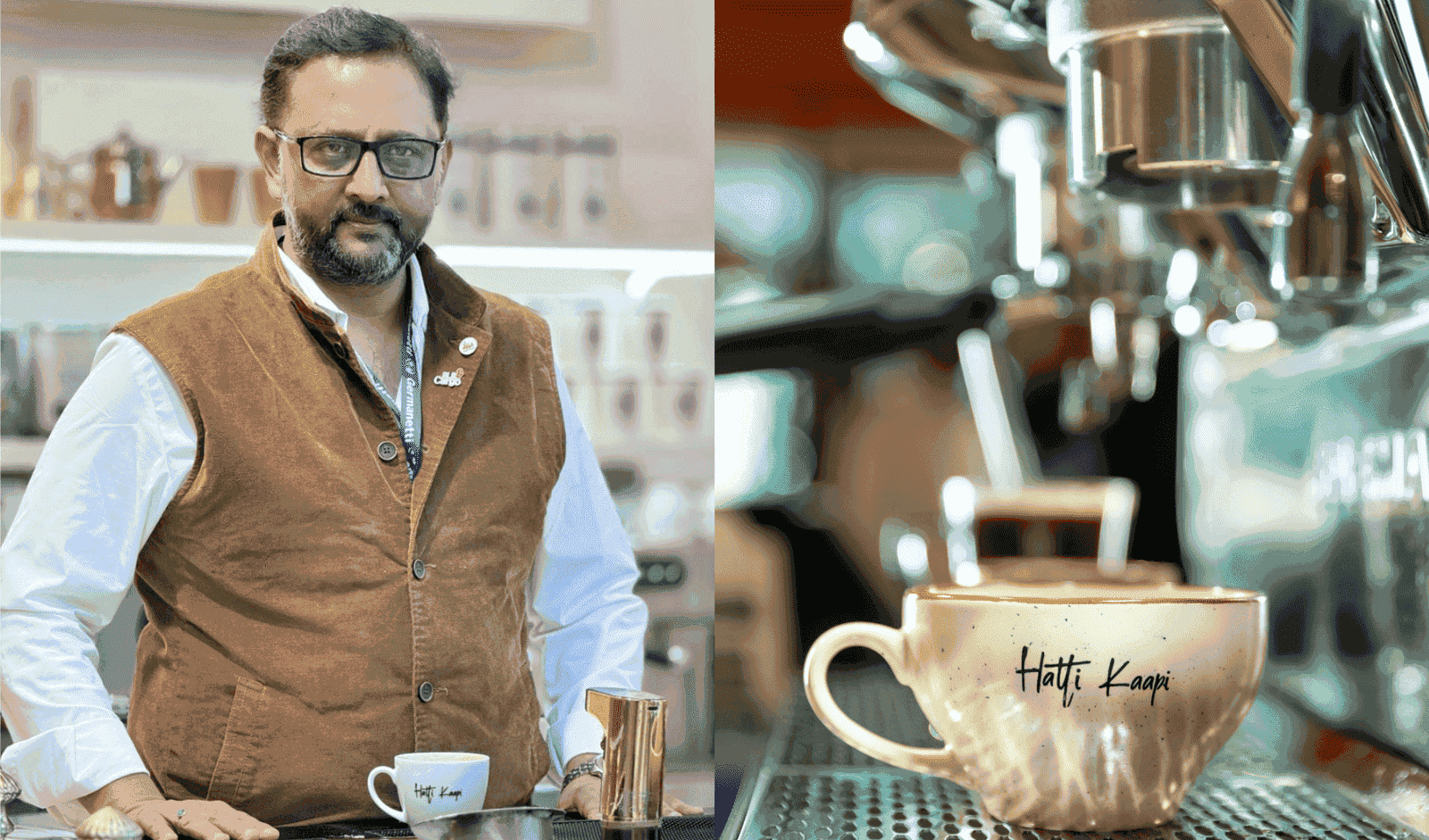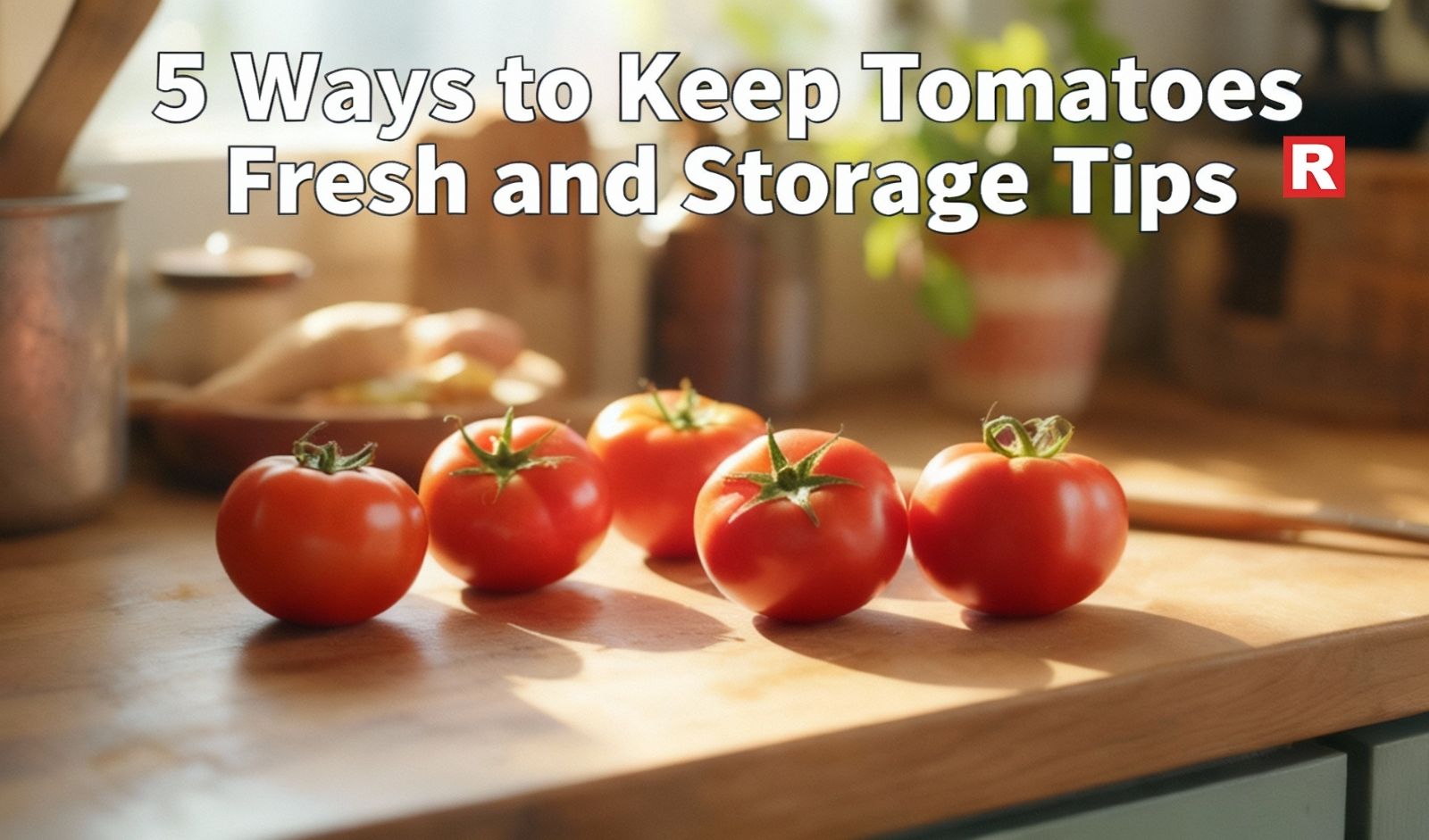
Indore-based Mount Everest Breweries Ltd. has launched its new premium beer brand, STOK, in Bengaluru, marking its entry into the Karnataka market. The company hosted an experiential launch evening at Mirage, Ashok Nagar, featuring stand-up acts, music performances and creator-led sets to introduce the brand’s “Live the Chill” philosophy.
The event included performances by Siddharth Shetty, DJ Lady Barot, MixItWithMendi and Mr Kadakman, along with immersive zones such as the brand’s “Laughter Brewery” and “Chill Scene.” Guests were also given an exclusive preview of STOK’s upcoming draught variant, which is expected to roll out across select outlets in the coming months.
“Bengaluru felt like the right place to introduce STOK,” said Vedant Kedia, Whole-Time Director, Mount Everest Breweries Ltd, adding, “It’s a city that celebrates creativity and community. We wanted a beer you reach for when you want to relax with friends or celebrate something small.”
STOK enters the Karnataka market with three variants, including Strong, Wheat and Lager, brewed using German hops, high-quality millets and advanced brewing equipment. The beers have been developed under the supervision of a master brewer formerly associated with UB Kingfisher.
Vinod Babu G, CEO of Mount Everest Breweries Ltd., said the Bengaluru launch aligns with the company’s expansion plans. “Our goal was simple: give people a premium brew that’s inviting rather than intimidating. With three variants and a draught offering on the way, we’re excited to be part of the city’s vibrant beer scene,” he said.
Positioned as a modern Indian interpretation of premium beer, STOK aims to appeal to consumers seeking quality without pretence. The brand is backed by a launch plan focused on distinct packaging, contemporary identity, and a product lineup tailored to younger, lifestyle-driven drinkers.
Mount Everest Breweries Ltd, part of the Associated Kedia Group, has a strong presence in central India and is expanding its footprint nationally with brands such as Lemount, Mount’s 6000 and Dabang. With STOK’s rollout in Karnataka, the company aims to strengthen its position in India’s fast-growing premium beer segment.

Have you ever wondered eating your meal at a prison? Waiters taking your order all dressed up in police personnel attire? And people serving your meal dressed in a prisoners’ outfit? Kaidi Kitchen, a theme-based restaurant has become a topic of discussion among food lovers, serving a mix of cuisine at a ‘Kaidi’ themed fine-dine restaurant.
“Opulent prison cells, cheerful Kaidis and a seductive aroma that permanently hangs in the air; we're a bit of a twisted fantasy, you would think. We would like to confide in you our response to that thought. Yes, we are,” said the confident Rohit Ojha, one of the Co-founders at the restaurant.
How did the business start?
Kaidi kitchen was started in December 2012 by three friends Rohit Ojha, Ankit Madhogaria and Saurav Aggarwal out of the need that pure vegetarian fine dine restaurant was not easily available in the city as they believed ‘Fine-Dining’ is an art.
After market research, the group thought of starting a multi-cuisine fine dine setup serving, Mexican, Italian, North Indian and Mongolian food at the restaurant.
The Kaidi chefs concoct a meal, with extreme attention to detail, to meet each customers' gastronomical whims and fancies featuring a motley of diverse cuisines.
According to the founders, it is an imprisonment of sorts, mainly indulgence. And the decor captures this sentiment quirkily, with the prison-inspired cells and the Kaidis serving as props. It isn't just dining anymore; it is an experience that is to be relished delightfully.
How did ‘Kaidi’ theme born?
When the group was looking for places, there were no theme in their mind, it is only this place which made them think to operate under ‘Kaidi’ theme.
“We did the trial before completely launching the outlet. We gave two choices to customers either sitting at jail and having food or observing from out the people who are preparing food inside the jail,” pointed Ojha.
The restaurant is made in such a way that if a person is sitting at their outlet he doesn’t get bored. The decor and designing part is done very smartly so that it doesn’t look unhygienic and dull because of the bricks they have used to give it a prison look, because food is all about having an all-over experience.
Entering the franchisee model
The restaurant which opened its first outlet in December 2012 entered into a franchisee model in March 2014 by opening its first outlet in Chennai and opened the second outlet in Kolkata in December 2014 being quick on response and expansion of its outlets.
“Our first outlet was located at Camac Street Kolkata and when people from North Kolkata used to visit our outlet, they complained to us for not operating the outlet near to them, so you can sense the response that we are getting from our customers,” said Ojha.
The group opened the second outlet in Mani Square Mall in North Kolkata so as to get the best footfall catching on the footfall of a mall as well. The restaurant also opened the party space at the second floor of its outlet as it was receiving good response from families who use to visit in large numbers of 30-40 headcounts. Getting an average footfall of over 200-250 at each of its outlet, Kaidi Kitchen is targeting high on its expansion.
“Our target is to increase the lunch footfalls, target office goers and add 100 more pegs in the next few months,” added Ojha.
A fully owned and funded Kaidi Kitchen by three of the partner-friends who invested approximately 1.5-2 crore to start the fine dine setup, is also looking for franchisees in tier-II cities to expand their business targeting at cities like Jaipur, Surat, Raipur amongst others.
“We were in talking terms with people in Jaipur and Surat, but we finalised it because we couldn’t find a suitable place because we are looking for place which is minimum 3,500-4,500 sq ft in space so that restaurant can be run very smoothly.
A mix crowd is the best result puller
The restaurant which has made a name among restaurant fraternity is getting good response in Chennai with 70 per cent of the crowd from Tamil locals.
“We were surprised to know that most of our customers are Tamil as we expected Jaini and Marwari crowds for our outlets,” laughed Ojha.
Targeting at around 2-3 franchisee outlet with tier-II cities expansion as the group believes developing cities do very well as compared to developed or metro cities.

Operated by techie Monica Rastogi and Shashaank Singhal Shekhar, who are both Red Bus ex-employees, Dazo has become a new and integrated food solution for people who have an appetite for fresh and healthy food. Presently, doing close to 300-350 orders on a daily basis, the food market place is planning to expand its services across Bengaluru and in other cities soon.
How was the idea of ‘TapCibo’ born?
Monica: When I returned to Bengaluru in 2012 after spending time in the US, I found that the city’s busy working population consumed mostly unhealthy food. Either they were having ‘rich’ food or expensive salads (or worse, skipping lunch altogether). And they couldn’t find enough places that could suit their tastes and could be counted as healthy. And hence, to bridge the gap, I decided to start this together with my colleague Shashaank, who was also facing the same problem.
Shashaank: My colleague and me were working with Red Bus, and finding the same problem in getting the right quality food. Being from a technology background, we thought of doing something in food along with technology and nothing looked best for us other than venturing into the food delivery service, where we could deliver food conveniently to customers.
As you both are a ‘Techie’, how are you ensuring service through food app?
Monica: From the day of the operation, we focused on the convenience of our customers, and hence, we started our food app. Once a customer downloads the app, they get an option for food listed on our site. And the customers can have a choice of vegetarian and non-vegetarian meals including salads.
Once the customer selects the meal option and the quantity he is taken to the next screen which shows their current location or the location where the order has to be delivered. After selecting the location, the customer is taken to checkout screen wherein they need to fill the exact address, if need be, and your contact details and confirm (the third tap). And the food is delivered to them within 2-3 hours. Meanwhile, we have also included technology in our next order, wherein if a customer comes back to us next time by using the app, they won’t need to re-confirm the details on the third screen.
What is the operation process? Who are some of your restaurant partners?
Shashaank: When we receive an order from our customers, the meals are already discussed with our restaurant partners, when the order is made; our delivery boy reaches the restaurant and delivers it to the customer. We have Tadka Singh, The ants cafe, Chai Point, Bhukkad and the Kitchen of Joy amongst others.
From where did you get the initial investment? You also received funding recently, where can we see that money being invested in?
Shashaank: The initial investment was done by both of us. However, I wouldn’t like to disclose the amount. And in my recent seed funding, which I did last month, we would focus on building technology, what does the customer want and how would we leverage technology into the same. We would also focus on bringing young talent and also expand our services.
Where is Dazo today?
Shashaank: We launched our services in Koramangala and Bagmane Tech Park last month reaching out to potential customers. We have launched a wallet through which customers can make the entire transaction cashless. Lunch, dinner and evening snack options are changed on a daily basis and include a wide variety of cuisines. There is a significant integration of technology at the backend to automate and optimise the logistics of food delivery.
And for the next two-three months, we will focus on Bengaluru by launching in new areas. And after a few months, we will enter into markets like Pune, Delhi, Mumbai, Hyderabad and Chennai.
Why did you rebrand yourself as Dazo from ‘TapCibo’?
Monica: We wanted a catchy and small name and as Dazo comes from the foodies, it was a much easier name to pronounce and relates better as compared to TapCibo, so we thought of re branding it.

What inspired you to come up with the idea of ‘shore to the door’?
During 2000, I was in the US, where I was studying and working simultaneously. The ease of getting sea food was very much there, it was extremely simple. In US, if you want good sea food you can go to supermarket, hypermarket, and you can order online. The fresh fish is available everywhere there. But whenever I use to come to India for vacations I had to wake up at 6 o’clock in the morning, go to fish market and haggle with the fish lady who did not have varieties, no quality assurance.
I found that there is a big vacuum in the market and that is what inspired me to start this home delivery business. About the end of 2004, we started the business.
How many households you deliver to in Mumbai, Bengaluru and Hyderabad?
We do more than 2,000 transactions in a day, so we are catering to around one lakh houses presently in all these cities.
And what are the plans of tapping more consumers and more metros while increasing the presence in modern retail?
There are 185 Tier I, II and III towns which faces the same problem with fresh fish. So for the next five years, we are completely busy. We are going to increase our home delivery network while tying up with more retailers. We are also planning to tie-up with more retail partners to run their hyper markets and gourmet stores.
We have around 43 outlets in different formats and we will take the count to 200 outlets in two years and 300 outlets by 2018.
Who is your competitor? And what are your strategies to beat your competitor?
I don’t know of any competitor of our scale, but we consider the unorganised industry as our competitor. Many people have tried to venture into delivering sea food but they could not succeed. We have the early mover and this business is not just a fish business it has become the operation business. So people are not able to understand.
After returning from the US what was the major challenge you faced in retailing seafood in India?
There were three main challenges- consumer, infrastructure and shore side. Consumers initially use to not believe that a company can deliver fish. They used to believe in the fishing community which was supplying them for long. Initially, it was very tough to convince the consumers to try our product first. Then there was the challenge of lack of awareness of buying right product. Many consumers did not know the right variety of fish. Though we were supplying the right variety of fish, consumers used to not believe in us because they were buying the wrong ones for the last 30 years.
On the other side, infrastructure is a major challenge, as there is no cold chain and chilling mechanism to keep the fish fresh for delivery. The fish should be preserved in a temperature of minimum 00c and maximum 40c to stop all bacteriological activities. Then, we didn’t have the vans with refrigerators and chillers or public transport or people whom we could outsource the service. So, we created our own thermocol boxes to deliver fish on a bed of ice to ensure that the consumer staying 30 km away too can get fresh and cold fish.
And at the shore end, the fishermen didn’t know how to take care of fish. Always, India has been the traditional exporter of higher quality fish and the leftover is supplied to the domestic market so fishermen used to not bother of preserving fish properly. We convinced the fishermen to preserve the fish, to use ice, and to not save money on ice, and then we promised them that we sell those fish at good prices. So, it took us lot of education and hard work.
Why do you plan to go online? Also, are you planning to offer through online marketplaces or tying up with food portals?
We have our product line for e-tailers. We started with localbanya.com then we started with e-tailers. We are quite ready to deal with online marketplaces too.
While we work with brick-and-mortar companies, we will have presence at virtual platforms too. Our vision is to make fresh sea food available to every household in the country that’s why we take multi-distribution channel like we have home delivery, hypermarket, supermarket, gourmet stores and e-tailing. Soon, we are launching our mobile app too. Either we will come to your house or we will serve where you want to shop.
We are quite clear that we will be as a brand on another portals plus, we will have our own eCommerce and mCommerce ordering platform. To avoid heavy discounting online, we will reset the price with e-tailers to always have certain promotions but not flat discounts.
What’s the source of funding? Are you looking for any investment or fund raising any time soon?
For the current fiscal, we will be investing around Rs 25 crore which will be from internal sourcing, part will be financing, as working capital requirement comes to dead and we will be looking at equity infusion also from private equity investors. We are already in discussion with fund managers.
What’s the revenue target for the current fiscal?
In the next 18 months, we are trying to cross the figure of Rs 100 crore of revenue. And over the next five years, we are planning to become Rs 500 crore to Rs 1000 crore company.
According to you, how big the Indian sea food market is? And by what per cent it is growing?
The sea food industry in India is of Rs 80, 0000 crore, growing at 4-5 per cent CAGR. The industry is so big and we have not even scratched the surface. We have so much work to do for the next 10 years.
Do you also supply to restaurants and hotels. Please name some?
That is one vertical we are going to start now. In the last 10 years, the hotels and restaurants have changed a lot. They are opening up to quality and differential pricing. So now I think is the right time for us to approach them. May be in the next two quarters, we will be reaching to restaurants.

In 2003, the capital market analyst Siddhartha Chatterjee together with his four friends, including Siddharth Bose and filmmaker Goutam Gosh, invested Rs 25,000 each to start a chain of restaurant Bhojohori Manna in Kolkata. The restaurant serves a wide variety of home cooked Bengali cuisine.
The team named their restaurant after a famous Bengali song, from a film made in the 70’s, by the legendary Manna Dey. The track revolves around a magical cook, who travelled to many lands and acquired a unique culinary style of his own. As a child artist in 1979, Siddhartha Chatterjee had also played the role of Topshe in Satyajit Ray’s film Joi Baba Felunath: The Elephant God.
Why did you opt for the name – Bhojohori Manna?
I settled down for the name ‘Bhojohori Manna’ because the name has a quick recall value in terms of food. The Manna Dey’s song had an element of nostalgia with Bengali’s as such. In the beginning, we experimented with a small garage space at Ekdalia, Ballygunge, and Kolkata, which was taken on rent from an owner earlier running a snack bar.
How many outlets are you running? Are you planning to tap North Indian market as well?
We are present in almost all big cities of India. We have three chains in Mumbai, two in Bengaluru, one in Puri, and one in Silliguri. Delhi and Gurgaon are very much in our mind, but the problem of high cost of manpower and rentals in these places will hike the prices of our menu, which might not suit the pocket of every individual.
How are you planning to expand in the coming years?
We are concentrating more in Mumbai and we are also planning to launch QSR model in Kolkata. So, our consumption in 2015 will be limited to Mumbai and Kolkata only. We are also focused on other markets of India and have plans to explore them soon.
What are the numbers that you are targeting this year?
We are planning to open four more QSR’s in Kolkata and two in Mumbai. Moreover, in cities like Delhi and Gurgaon, we will be looking for good managers who can manage lesser cost of manpower, so that our menu prices are not impacted much.
Are you looking for a franchisee opportunity?
The franchisee model is in our mind, but as of now, we are not offering any franchise. Moreover, we would like to send our cooking team to get the production done in our own style because we can’t compromise with the food quality and taste. So the production department will be managed by us only, rest other things need to be managed by the franchisee.
Who are some of the investors in your venture?
We are five partners together running the business. The business is funded by all five of us. Neither we are seeking, nor do we have any external investment from any individual or group.
What is the current turnover of the company?
We should reach around Rs 23 crore mark by the end of the year 2015.
What unique strategies you follow to differentiate yourself from other restaurants?
Despite using the top quality inputs, we have designed our pricing in such a way that the customer finds it a ‘value-for-money’ product. We believe in pricing the food according to its cost and not on the name of the brand.

By delivering real taste and serving some of the best ‘Puttu’ flavours, the restaurant has emerged as a landmark in Kochi’s dining scene:
What products do you use in your restaurants?
We do not focus on any particular brand or name while selecting the products for our restaurants. We just go for the best quality products available in the market. Rice powder is our main product and we manufacture it on our own in collaboration with the company.
How do you select on items to prepare the best menu?
Menu is the most essential part of any restaurant. We introduce new menu almost every day. Before deciding any menu, we do a lot of research; borrow ideas from our chefs, and also consider the new food trends.
Tell us about your marketing strategy to reach out to masses.
We believe in making our guests feel relaxed, nourished and satisfied by our food and services. We believe that if we focus on giving our customers the best service, keeping in mind the hygiene factors, ambience and tasty food, then we can make our customers walk in again.
Tell us the elements into consideration while designing the kitchen
Kitchen is a part which should be perfectly organized and managed. We worked on making it in a traditional way. We have worked on creating the ambience of old fashion kitchen, where our mothers used to cook.
What were the points you kept in mind while designing your restaurant?
We decided to open our restaurant in the heart of the city. Also, we did make sure the type of ambience and the environment that people love as they enter our restaurant. You can always feel the liveliness of celebrations and enjoyment.
What is the total footfall in your restaurant every day?
We serve around 700-800 customers daily in our restaurants.
What is the supply chain process? Tell us about your biggest suppliers and vendors.
We have a lot of vendors and suppliers near our restaurants, from where we purchase the basic ingredients and raw materials on daily basis. The food powder that we use is specially manufactured by our vendors. We ensure that every food product or food ingredient we buy is fresh and real.
From where does the investment come in your business?
We are five partners in our business. Till now, all the investments are from our side only.
What are your future expansion plans?
We are currently running three restaurants – one is Dhe Puttu, which serves different types of breakfasts; second is Hotel Ananda Bhavan, which is fully a vegetarian restaurant; and third one is Rukmini, which is a non vegetarian restaurant. We are planning to launch some new products and cuisines in our restaurants and you will see some major changes in our menu soon.
Are you planning to enter into a franchisee business?
Yes. We are working to expand our services and hence, we are looking for franchisee partners for the same. We will enter into the model soon.

In an interaction with Restaurant India, Arjun Khera, Chief Brand Officer, Smoothie Factory, shares his views about changing food trends in India and expansion via franchise route:
What made you sign a franchise deal with Smoothie factory and bring it to India?
Smoothie Factory attracted me with their health and wellness quotient. The freshness and premium quality of the products was another thing which attracted me. In India, people are increasingly becoming health conscious and are looking for healthier alternatives to traditional fast food. Smoothie Factory provided us with an opportunity to provide that in a Quick Serve Casual Dining concept.
How has the food trend changed in India over the time?
Earlier, people were majorly into Indian food, but lately, many foreign cuisines, especially western cuisine has gained much popularity. Burgers, for example, are now widely accepted. Before that, Pizzas gained every household's acceptance. This is because of the evolving taste buds as well as increasing awareness of western food and the convenience it provides as a quick meal. Sandwiches are another great example of tasty, convenient food product gaining wide acceptance in India.
What according to you is the reason behind the growing healthy food sections in India?
Not only India, people across the globe are becoming more and more conscious about their health and lifestyle. Thanks to the various awareness campaigns, people are now realising the ill effects of junk food and empty calories.
Additionally, the young working population are independent and do not have much time to prepare every meal at home, which is why they look to eat out. They are eating out more often than earlier, which is why the demand for nutritious and healthy meal is constantly increasing because they don't want to repeatedly have heavy, fat filled and/or unhealthy junk food.
Who do you see as your target audience in the country?
The majority of the population, both young adults and youth, are the target audience for our product line.
You are presently operating two outlets. What are your expansion plans?
We have a third outlet coming up in March 2015, while a fourth is lined up for August 2015. Currently, we are investing in company operated outlets. In another 12 months time, we would be aggressively looking to expand through the franchise route.
Who do you think as your competitor in this segment? How is your strategy different?
There's no direct competitor as of yet. For the product line that we offer, there's a lot of competition, but it's scattered. There's no other brand in the country with the same product line under one roof.
What is your plan for taking Smoothie Factory to pan India?
We are looking at least 35 company owned outlets within the next 5 years via franchise route. We see the potential of around 90 outlets throughout the country at this point of time, which is increasing at an encouraging rate.
What is the power punch of eating Smoothie?
We blend nutrition with great taste. Our motto stands true for each and everything we make and serve at Smoothie Factory.

What encouraged you to start a Chai business?
Pankaj: Chai is India’s national drink (unofficially). But 95 per cent of chai in India is sold on road side thelas in a very unhygienic form. I thought if we can sell chai in a more structured and in a hygienic form, then there is a huge potential
Nitin: Being a corporate guy, I could never find freshly brewed chai in my office. Generally offices have a tea dispenser machine, which gives you an awful taste. I thought to solve this with an entrepreneurial approach and started Chai thela.
We see many IITians venturing into fresh food and chai business. What has brought this trend in the engineers? Is it the food love or immense scope available in the Indian food industry?
Pankaj: I think it is both. People who are passionate about food and wish to start some thing of their own would look out in the same sector. However, for me it was a pure business preposition. I identified the problem – People don’t have access to hygienic tea and decided to do something about it.
What made you name it ‘Chai Thela’? What are the types of tea brewed at your outlets?
Pankaj: We wanted to create a brand which must have a quick connect with customers. Also 90 per cent of tea in India is sold through road side thelas only. Therefore, we thought to come up with modernised (Hygienic and branded) version of a thela and hence, we named it – Chai Thela. There are around 40 varieties of tea at our counter ranging from adrak chai, masala chai, dhaniya chai, green apple chai, mango chai, kashmiri kahwa etc.
You are presently based out of Noida. What are your expansion plans?
Nitin: We are planning to enter Gurgaon and Delhi in the next 4 months and later, we will expand our operations to different cities in India.
Who is your target customer as you are mostly present in IT parks and colleges? What is the range for tea?
Pankaj: Our Target customers are corporate, college campuses and hospitals. The price range of tea is from Rs 10 (Aam Aadmi chai) to Rs 25 (Mango Chai).
From where did you manage to get the funds? Are you looking for any external investments?
Pankaj: Initially, we bootstrapped the company. But now, we are looking for funds for expansion.
We see a lot of tea start-ups in metros. Why aren’t they targeting the tier-II market?
Nitin: There is a great potential in tier -2 cities. After Delhi NCR, we are focusing on tier 2 cities only for expansion.
Who do you see as your competitor in the market? How is your marketing strategy different from others?
Pankaj: There are a lot of players coming up in this sector. However, Chai Point is doing great. Recently, they have raised around Rs 10 crore in funding, but they keep chai in containers and we on the other hand, offer freshly brewed chai.

Trace the journey of Catch Spices over the years?
Catch was started in 1987 and the kitchen range was started in the early 2000. Catch has been known for its sprinklers. The growth in the spices segment, primarily in the branded spices space, happened on the back of huge investments made to increase consumer awareness. This further fuelled the growth of kitchen range of spices in the year 2000. Catch offers largest range of spices across India.
Through which retail formats you are present in the market?
We are present across all three verticals – modern trade, retail and institutional.
What is USP of Catch?
We are not bound to one USP, the USPs are many. To begin with, we are the only brand in the country which uses the LTG technology (Low Temperature Grinding), which all spices have essentials in them. So, when you grind the spices, the grinder creates the heat and the essential oils in spices tend to evaporate making the spices very less effective. We have chilled water running across the grinders which keep the temperature low and hence, retain the essential oils in the spices. Secondly, we have multiple packaging options from 0.4 gm sachet to 25 kg bag. Our wide range suits different types of customers’ needs. As a FMCG brand, we very firmly believe in strong distribution keeping in mind the quality commitment made to our consumers.
What is the group turnover? And what is your target?
The group turnover for last financial year was Rs 4,500 crore. In this financial year, we are trying to hit Rs 500 crore from spices category. We are very sure that we will hit that magical number this year.
Do you think taxation is a problem for this segment?
We have only 5 per cent of VAT on spices. But on other products like tobacco and Rajnigandha, the taxation is on higher side.
What is the route of investment at the group?
It is basically internal accruals and we have recently shifted to the groups’ new headquarter in Noida.
What challenges do food businesses face in India?
The first challenge that food operators face in the country is the consistency in product quality and other is right distribution of the products.

What is your presence in India and globally presently? What is in your radar next?
Zomato is an online and mobile restaurant search and discovery service, providing in-depth information for ~300,000 restaurants across 18 countries. The company is present in over 100 cities across India, Canada, the United Kingdom, New Zealand, Lebanon, Poland, the Czech Republic, Slovakia, UAE, South Africa, Philippines, Portugal, Brazil, Chile, Turkey, Indonesia, Sri Lanka, and Qatar. We are planning to expand to multiple geographies over the next few months like Malaysia, Vietnam, Jordan, Kuwait, KSA, Oman, Colombia and Poland are some of the countries in the pipeline.
You are the leader in the segment. What exactly is your business and revenue model?
Our freemium business model directly and positively impacts the restaurant industry. While we list all restaurant information on the website at no cost to the establishment, restaurant owners have the option of advertising on our highly targeted platform. Given that our advertising model is hyper local, businesses can display ads to hungry consumers looking for dining options in a specific area. Zomato provides restaurants with analytics to track their performance, engage with their patrons by responding to reviews and feedback as well as directly add their promos. Globally, over 4000 restaurants advertise on Zomato, who have seen a marked, measurable growth in their business. Online advertising accounts for 100 per cent of our revenue.
Are you open to both routes for expansion organic and inorganic?
Post recent acquisitions, the only thing that has changed the way we think is that inorganic growth is no longer ruled out. But that’s not the only way forward for us. We’re still going to venture into the markets and build from ground up. It is important to have the right team and people to execute Zomato well in the market more than an acquisition or starting from scratch. When an acquisition gives us a great platform to launch with and a great team to take the business to the next level, we wouldn't rule out an acquisition.
Have you covered all the cities in India? If not, what is your plan?
We are currently present in 36 cities in India. We are focusing our energy on increasing our footprint in India and abroad.
You currently raised the third round of funding. Where can we see that money invested in the business?
The latest fund will be used to accelerate Zomato's global expansion and new product development.
You have also changed your logo. Was it a business decision or an emotional decision?
Our logo has evolved since our inception as has our identity – from the Foodiebay days up until now. Zomato is currently available in 18 countries, and those numbers are only going to increase over time. As a global brand, we felt we needed a logo that could transcend languages, cultures, and geographical boundaries and be recognised easily by people all over the world.
With our rebranding, we are trying to share our philosophy as an organization and people. The rebranded logo captures the story of millions of meals and experiences being shared with a vast global community of people i.e., the story of 'people and food'.
What is your unique marketing strategy?
While our medium is primarily online, our marketing is a mix of both online and offline and we intend to continue in that vein. Our online marketing encompasses search engine marketing, and our social media channels are a great way for us to connect with our users.
We use our social media channels as a fun engagement medium to spread awareness about who we are as a company and as a product, and also listen to what our users have to say. Listening to users is always helpful because if they find a product useful, they spread the word among their friends and social circles. As for offline, we tie up with restaurants for BTL advertising, especially in new markets.
Right now, we’re heads down in expansion mode and number one on our agenda with respect to marketing is to make Zomato a global synonym for food.
How easy it was for you to get the global partners on the board?
Investors look for a product that adds long-term value to an increasing user base. Our product offering up-to-date content, a scalable business model, and a great team in place gave investors the confidence to invest in us.
No doubt you are on top of the list. Do you feel threatened sometimes?
There is immense competition in the start-up world. What spices up the competition further is the product offerings. A lot of people will have the same idea as you; the point is to ensure that you outdo everyone else. Keep shipping things. If you’re focused on creating a world-class product, the reception you get is honestly worth all the effort. As we grow, we’re more driven to constantly improve our product with less room for error.
What is your expansion plan?
We have two focus areas for the immediate future – expansion across multiple geographies, and building vertical depth within the restaurant space.

What according to you is the latest trend in the F&B industry? And which cuisine you find is exciting in the world?
One of the hottest trends in world in terms of cuisine for the last couple of years has been molecular gastronomy. Another trend hot around the world is, ‘speak easy’ bars with mixologists taking centre stage. These are people who have mastered the art of blending, shaking, stirring and infusing drinks and alcohol with unbelievable combinations and complex garnish preparations. Besides this, social networking and craft brewing is another trend ruling the Indian F&B segment.
​​I love food plain and simple. There is no cuisine that I tend to lean towards and I think the future of cooking does not lie in any one cuisine but in taking the best of many cuisines and creating your own distinct flavours.
How has the shift changing in the eating habits of consumers in India?
The Indian consumer is becoming more and more sophisticated, demanding and knowledgeable about food. This has come through travel, international exposure and also because of media. People want to eat healthy, nutritious food without compromising on taste.
Do you think that the global brands that are entering India will follow the same food regulations as they follow in their own country?
Most of the brands will follow the same regulations, if not all global brands comply by their respective brand manuals. The brand manuals contain most possible scenarios that may come up during operations and have a standard operating procedure in each event. I do feel they would need to adapt their menu options to local tastes and strategies will also have to be realigned due to religious boundaries present in our country. Beyond this, I do not see why they would have to modify their standards and regulations.
How do you design menu at your restaurants? What are the essentials that need to be taken care of when managing a kitchen?
When it comes to menu planning, there is no paragraph that would do justice to this science. This being said we at Brewbot take into consideration local tastes, preferences, availability of produce and season. We try and provide a spectrum of flavours through our menu and try and stay as true to food as possible. The only time we adapt a few recipes is when we feel we can truly bring out more in a particular dish by doing so.
Managing a kitchen is challenging affair, it is not for everyone. Working in the kitchen, is working in a high pressure environment. Every plate matters and the most important thing is stay focused, calm and keep your head in the game.
You are experts in American and European food. What would you comment on the authenticity of these foods served in Indian restaurants?
In few cases, restaurants that claim to be serving American and European food have completely adapted the originals and in some cases the dish that arrives to the table has nothing to do with the name on the menu.
According to you, how is supply chain helpful in expansion of a brand?
For the growth of any brand it is essential as well critical to have a well structured supply chain. It is not only connected with bringing down costs through centralised purchases but also linked to consistency and constant availability. To put it simply a building that has a strong foundation might cost more but without a doubt it will rise to the sky as long as you build it but without a strong base it shall feel pressure as it rises and chances are that it may crumble after a point.
What according to you is the right recipe for food business in India?
hahahaha, well it is definitely not a formula. There is no algorithm to success, but there are definitely some qualities that a person should have. I believe, these qualities are the willingness to work without looking at a clock. It is being dedicated to a cause, a belief, to act when required and to learn and knowledge of the workings of the trade and most importantly having the right team.
What do you do to bring out the best flavours in your cooking?
To bring out the best flavours in the food, we focus on sourcing the best ingredients available. We are dedicated to using the best of the best available. We even have our own farms growing some of the produce and most of the herbs used at the restaurant. Beyond this we use the best practices implemented internationally in establishments around the world in terms of food production, preparation and storage.

In a tete-a-tete with Restaurant India, Rahul Singh, Founder & CEO, The Beer Café, shares his view on how the beer culture is shaping the Indian beverage industry. He further discusses his expansion plans and the concept of launching India's first PYOB (Pour Your Own Beer) chain:
How is the beer market different from other alcohol segment in India?
Tedious laws and procedures make Indian beer market very complicated. State taxes make beer more expensive than other alcohol as per volume. Overall beer constitutes just about 5 per cent of total alcohol consumed in the country. However, the market is expected to reach $9 billion by 2016. A lot of microbreweries are coming up in the market and the Delhi government recently announced that malls and pubs could have breweries on location. In terms of consumers, they prefer the stronger beer varieties. Globally, it is the opposite where most of the beer consumed is mild. But we are noticing a gradual shift toward lighter brews in India as well.
You have been in this industry since 2011. How do you see the beer culture shaping the Indian beverage industry so far?
There has been a great shift from hard liquor to beer. The beer industry saw a major growth in the year 2013 and is still growing at the rate of 8 per cent, which shows that the preference of beer over any other alcohol is more. Usually Indians prefer whiskey that is stronger and can give them an instant buzz, but due to rapid globalization young corporate and well-travelled consumers prefer relaxing and unwinding with a pint rather than a peg.
You are presently operating in Delhi-NCR and Chandigarh. What is your plan in taking 'The Beer Cafe' in other parts of India?
We have recently launched an outlet in Amritsar, two in Mumbai and one in Pune. We want to take The Beer Café to every neighborhood so that beer enthusiasts can enjoy their favourite international brews wherever they are.
What was the concept of launching India's first PYOB (Pour Your Own Beer) chain? How the business has been so far?
We have licensed the PYOB (Pour Your Own Beer) technology from DraftServ USA. We have about 8-10 beers on tap that can be poured directly by the consumer using a special RFID activated card. The customer will only be charged for as much beer they pour and they could try as many beers on the tap in the quantity they prefer. The card could be used at any outlets across the country. We have done pretty well in terms of business and we plan to take this technology to the next level.
Tell us more about this unique concept and different varieties of beer that you serve to your customers?
The concept of PYOB was put because we wanted our customers to taste all type of beers by pouring as much as they prefer for tasting. It is a unique concept. Ours is the only cafe in India that serves 50 different varieties of beer. We would like to increase both the overall number of bottled and draught beers. We are also introducing a new food menu that complements the beers available. This is something we are very excited about.
What is your share in the alco-beverage market in India?
The Beer Café is a very unique alco-beverage service chain. With not many peers in the industry it is difficult to compare. However, with 15 outlets across the country and 18 more in the pipeline, we are working towards becoming leaders in the industry.
You have recently raised seed funding to support expansion. Who are the investors and what is the amount you have received from them?
Yes, we received funding from Mayfield as they believe in the concept and its growth in India. The funding is being used to expand our presence across the country, introduce newer technology and a new retail format - The Beer Café BIGGIE which is completely different from the rest of the chain. We aim to have at least one BIGGIE outlet in every metro.
Copyright © 2009 - 2025 Restaurant India.





